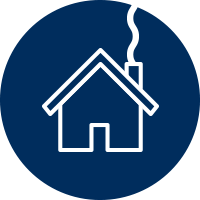HelpStir
Project Introduction


Date: Mar 13th to Apr 4th, 2017
Role: UI Designer, Coder
Tools: Arduino, Processing
Type: Group Work
Team Member:
Mandy Ng,
Alex Wan,
Justine Zhang,
Jonathan Bednarek
Background:
People diagnosed with Parkinson’s disease, carpal tunnel syndrome, and people lacking fine motor skills experience pain performing everyday tasks such as stirring their coffee.
The Helpstir helps empower these individuals by allowing them to have their favorite beverages by themselves and in less pain and encourages them to gain the health benefits of coffee and drinking more fluids.
Process
dESIGN ITERATION:


Ideation: The requirements of this project are reasonably simple and general that we are asked to create something the users can interact with. Indeed, There are many relatively easy ways to build a project to meet the requirements but instead of that, we strived to make something truly meaningful and practical.
When brainstorming ideas for the project, the topic of coffee came up, and one of us suggested “wouldn’t it be nice if we didn’t have to stir our coffee all the time?”. After examining precedent products and researching possible target users, we concluded that the Helpstir will be a valuable product for individuals with fine motor difficulties.
Prototyping: For the prototyping phase, we worked to create a functional electrical circuit to get an idea of the size of the finished product and demonstrate three sensors we would use for interactions. A challenge we faced at this point was condensing the circuit enough to fit a standard mug/tumbler/cup (approximately 6-8cm in diameter). We dealt with this by using an Arduino Nano as our microcontroller and one mini breadboard for our circuit.

SIDE CODER:

Analysis: Finally, we tested the usability of our physical product by conducting tests. Ideally, our mug would be fully waterproofed and the tests conducted using actual beverages. However, due to time and budget constraints (the total cost of building totaled about $100), we worked to ensure that the construction and mounting of the whisk to the motor were strong enough to stir non-liquid objects. We also researched possible materials and methods for waterproofing, such as using Sugru mouldable glue and custom-made rubber seals.
Prototyping: As a coder, I am mainly responsible for interface designing in the processing and the data communication between processing and Arduino. We added interactive messages for users, for instance, when the temperature sensor detects a degree of over than 90, the warning would display on the screen to tell the users do not drink at this moment.
We combined the history tracing on the interface since we think it would be extremely helpful for users to check how much amount of beverage they drink per day or per week.

What we want to build in the future
Project Reflection
We have been told this project has a real potential for a business product from our instructor. I think it has been a good start to dealing with motor skill issues that our target audience may be experiencing, but further improvements are required to enhance the effectiveness of our project.
From this project, I have learned a lot of materials in the electrical circuit. The communication between Processing and Arduino makes the data handier to be manipulated. I have also built my skills in planning and managing project for a real business product.




